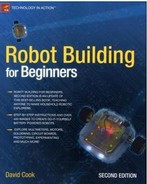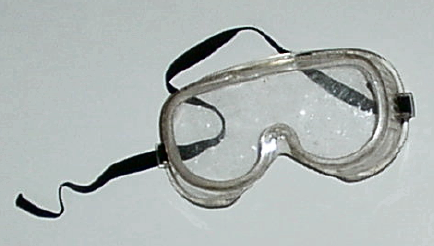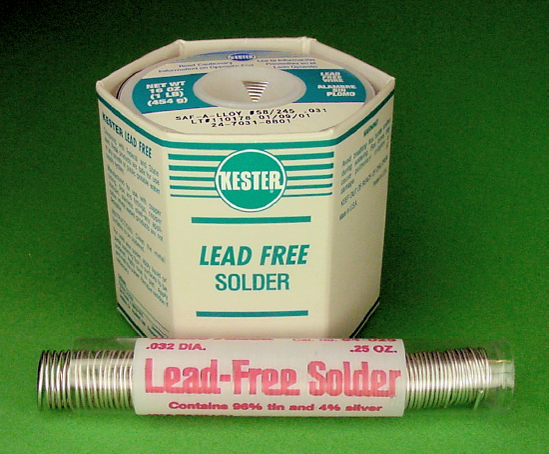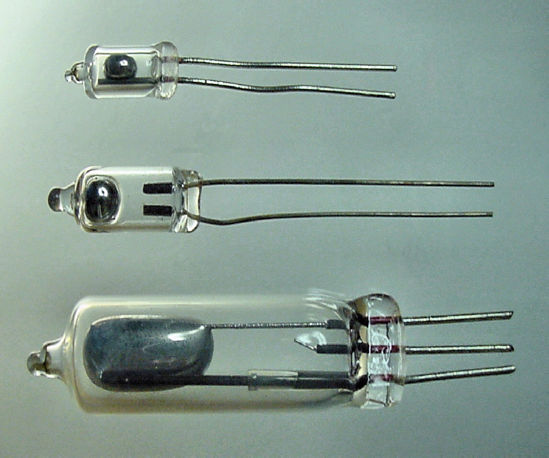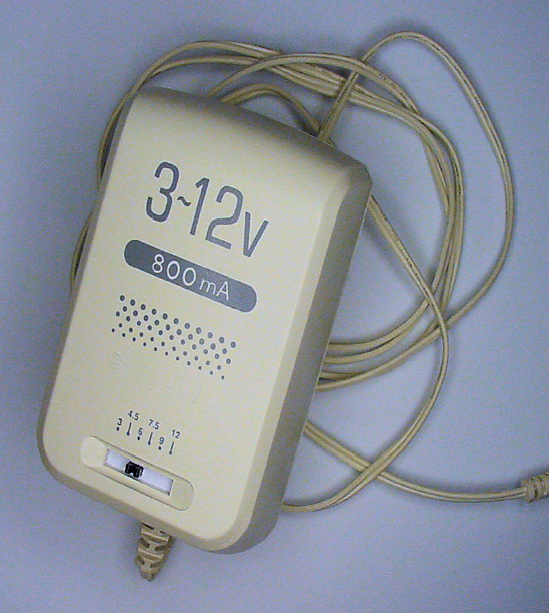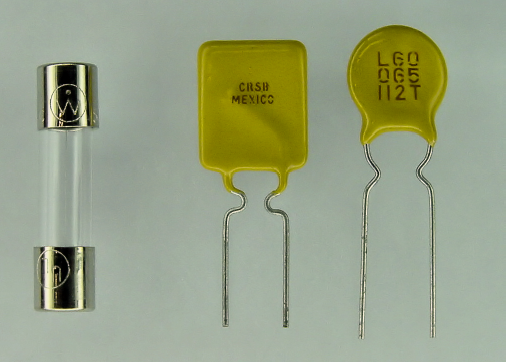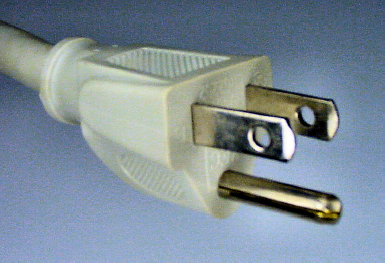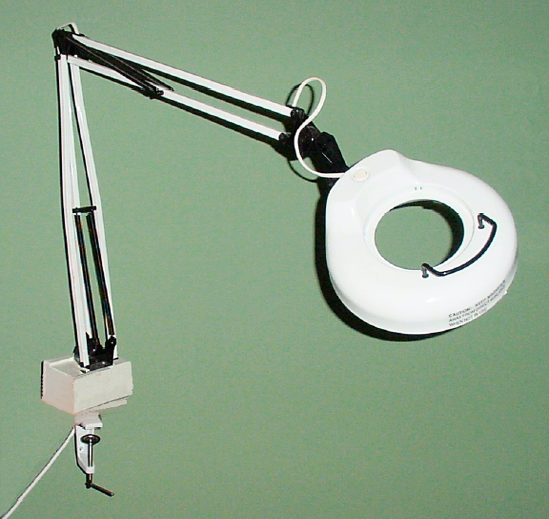Building a robot is a sign of great intelligence. Retaining your health while doing so is a sign of greater intelligence.
Robotics involves a number of potentially harmful or dangerous situations. This safety chapter is meant to introduce readers to a broad variety of concerns regarding the hobby. Now, here are a few examples of potential dangers that may be encountered in the activities described in this book:
Heat sources (burns, fires) during soldering and installing heat-shrink tubing
Spark or ignition sources from batteries
Bodily harm (cuts and so on) during drilling and cutting
Chemical exposure in solder, solder flux, glues, and electrical components
Eye injury during drilling, cutting, soldering, stripping, and snipping
Inappropriate tool and component access by children
Robotics is a great hobby to share with a parent or child. However, many of the tools, chemicals, forces, and power associated with robotics can be dangerous. Minors should only attempt to build robots with the assistance of an adult.
Always read and follow the instructions provided with equipment and materials. A cynic would suggest the manufacturer's warnings are only designed to reduce the company's liability, but that's fine if it keeps you out of the emergency room.
There's an added benefit to reading the manuals: You might learn a technique that improves the effectiveness of the tools or describes a feature you didn't know about. Remember, the information is coming from the experts.
If you're fortunate enough to have access to a laboratory or machine shop, follow their shop rules. The rules are designed not only to keep everyone safe, but also to protect the equipment and to produce a high-quality product.
Keep manuals and safety sheets with their associated equipment. That way you know where to look if you lend the tool to someone or are having difficulty using it yourself.
Reread instructions every so often. As part of my research for this book, I reread some tool manuals and was delighted to learn some things I had either forgotten or missed on first reading.
When in doubt, ask for help.
The labels for chemicals are as important as the instructions for tools.
Of additional benefit are Material Safety Data Sheets (MSDS), which often aren't included with the chemical at the time of purchase. The MSDS lists all hazards and the appropriate preventions and solutions. These sheets are available from the manufacturer and often the distributor. The sheets are commonly posted on the Web.
A single errant shard in an eye can eliminate your depth perception and half of your vision. A chemical splash can impair or destroy both your eyes. Together with a sharp brain and steady fingers, your eyes are fundamental to building great robots.
Wear your safety glasses! (See Figure 3-1.)
There was a woman up the block from me who made a little extra money by sewing. One day, the needle from her sewing machine shattered during ordinary use, sending a piece of the needle into her eye. Freak accident? Yes, but it goes to show that you can't rely on your sense of what is dangerous to determine when an activity might bring about an eye hazard.
I always wear safety glasses whenever I work around machinery or chemicals. I also wear safety glasses when snipping wires or cutting sheet metal.
A tip from your high-school shop teacher: Never place your safety glasses face down. The lenses will become greasy, soiled, or scratched. The decreased visibility results in a lower likelihood of your using the glasses and an increased likelihood of your removing them "just long enough" for a close inspection.
Instead, hang the glasses some place that you'll be reminded to put them on before using the equipment.
Wear appropriate gloves and long-sleeved clothing to protect yourself against irritation, minor scratching, chemical burns, or even poisoning. I always wear long pants, long-sleeved shirts, chemical-resistant gloves (see Figure 3-2), a dust mask, and safety glasses when working around chemicals.
Thick leather steel-tipped boots with puncture-resistant soles are appropriate when working with metals or large, heavy materials.
Oh, man—somebody open a window! Try to use chemicals outside. If that's not possible, open a window. If the room lacks windows, obtain proper ventilation equipment such as an exhaust fan. In cases of recurring or extreme exposure, consider using a respirator.
Seemingly benign materials can irritate your nose, throat, and lungs when reduced to an airborne form. Wear a dust mask (see Figure 3-3) when sanding or drilling.
Everyone knows that smoking is bad for you. But, sometimes people forget about the potential for smoking to act as an ignition source for flammable chemicals or fumes. This is especially a danger in poorly ventilated rooms.
Store chemicals and tools up high and lock them securely to keep them away from children.
Place chemicals and raw materials away from heat sources, such as soldering irons, heat guns, stoves, furnaces, and water heaters (think of the pilot light). If you transfer chemicals to a different container, or simply expose something to a chemical during use, be sure to label the item properly, including all appropriate warnings.
Speak to your friends and family members about the items and chemicals you have. This is especially important if you are prone to stealing your spouse's Tupperware® bowl for etching copper circuit boards (not me, of course). You don't want the bowl reclaimed for its original purpose.
After any soldering, painting, sanding, chemical or otherwise soiling job, don't eat or drink anything until you've had a chance to clean yourself up. At the very least, wash your hands with soap and water.
In years past, matter was chosen based primarily on its beneficial attributes. However, as environmental and material sciences progress, the negative characteristics of a particular matter is being given more significant consideration. Many seemingly benign or marginally acceptable substances are now found to be too dangerous or polluting.
Toxic elements are of serious concern. Unlike compounds, elements can't be destroyed by chemical reactions, such as fire or incineration. However, when disposed of properly, many can be recycled or chemically neutralized.
Lead is being banned from an increasing number of products including electronic components and assembly. Airborne exposure to lead is the worst, followed by ingestion, with the least absorption through touch.
High levels of lead can cause death in adults, but even moderate blood levels cause permanent loss of IQ in children. To give you a sense for the danger, the current "safe" level of lead in blood for children is only one-tenth the level acceptable for non-pregnant adults.
Avoid purchasing products containing lead, including lead-acid or lead-gel batteries, even at surplus sales. Don't throw away items containing lead, but instead take them to a local hazardous waste collection site for proper disposal or recycling.
Like most technicians, I learned to solder using standard 60/40 (60% tin and 40% lead) solder. It flows well. However, I made the switch to a tin-silver lead-free alternative (see Figure 3-4).
When lead-free solder is purchased in the small 16-ounce rolls, the cost is insignificantly higher than leaded solder. Initially, if lead-free solder seems more difficult to apply cleanly, it may be because you aren't accustomed to it. With the correct temperature and practiced technique, lead-free solder works as well and even forms a stronger bond.
Flux, the cleaning material within solder, is irritating and a potential carcinogen. So, being lead free doesn't completely eliminate all dangers. Adequate ventilation and clean-up helps here.
Old-fashioned mercury tilt switches are sure cool to look at (see Figure 3-5). However, mercury is a particularly toxic element. Small amounts can poison you, as well as make their way into rivers and streams.
Don't purchase or use items containing mercury. Mercuric-oxide, silver-oxide, and even zinc-air batteries contain mercury. As long as people continue to buy products with mercury, they'll continue to be manufactured. If you use a mercury switch in your robot and the switch shatters, spewing mercury all over your robot, how are you going to clean it up? The robot is covered in toxin.
Don't throw away items containing mercury, but instead take them to a local hazardous waste collection site for proper disposal or recycling. Most types of consumer batteries are accepted at local hardware stores (or Target or Wal-Mart) for disposal and recycling at no charge. Seriously, a few minutes of your time here can make a significant impact on the environment.
Cadmium is also a hazardous element. Don't buy nickel cadmium (NiCd, NiCad) batteries, even at a surplus sale. Nickel-metal hydride (NiMH) batteries are a superior replacement, in several ways.
Take items containing cadmium to a local hazardous waste collection site for proper disposal. Again, many local retail stores accept batteries for disposal at no charge.
The European Union has a regulatory initiative called RoHS (Restriction of Hazardous Substances). This initiative is also being adopted in various forms by states and countries throughout the world. The purpose is to reduce the usage of certain harmful elements and compounds. Manufacturers that comply with the requirements can label their product RoHS.
This initiative is being adopted broadly across the electronics industry. In particular, you'll notice seemingly identical components with part numbers that differ by only a single digit or letter. The difference is usually that the newer part has either been certified or modified to be RoHS-compliant.
Ironically, rather than leading to increased costs, RoHS parts are often slightly less expensive. I don't know whether this is due to the reduced disposal costs related to the less-hazardous waste, or whether the remaining limited supply of the non–RoHS parts is being demanded by downstream manufacturers that specified the old part number in their products.
In any case, RoHS is good for you because you get the same great functionality with less nastiness. And, it's good for the environment.
Electricity is the lifeblood of a robot. Too much electricity or its passage through a vulnerable location can be harmful to the robot as well as the designer.
Billions of AC (Alternating Current) appliances are used safely everyday. However, those appliances were designed by people with more experience and education than the ordinary hobbyist has.
Alternating current itself isn't the problem; it's the high voltage and never-ending current available from the outlet. As such, this book avoids projects related to AC.
Instead, stick to low-voltage DC (Direct Current) applications. In fact, all of my robots run from standard consumer batteries. Although a capacitor charged by a pair of 9-volt batteries can still wake you up, and obviously 12-volt car batteries can kill under the wrong conditions, the overall risks are dramatically reduced in comparison to the household outlet.
Rechargeable batteries have become very practical in recent years, not only from an environmental standpoint, but also financially. Specially designed rechargeable lithium batteries and nickel-metal hydride (NiMH) batteries are readily available.
Beyond safety, an advantage of using batteries is that the robot can roam freely. Tethers (power lines or other cables) tend to get tangled and confine the device to a clumsy, short range. Inevitably, either you'll end up tripping over the lines, or they'll get jammed in the robot's wheels.
If you need steady, long-term power, then purchase a voltage-adjustable DC power supply (see Figure 3-6). Although the power supplies connect to AC, these "wall warts" were designed by professionals and usually have built-in thermal and current overload protection inherent to their DC voltage regulators. In short, they're usually safer than the converters you could make on your own.
Now's a good time to check your house's fuse box to see if the previous owner jammed pennies into any of the fuse holes.
With power tools and electronic experiments, it's better to run them through an outlet strip with a built-in power switch and circuit breaker (see Figure 3-7). That way, even if the circuit breaker fails to trip, you can quickly cut power without having to touch the rampaging device.
GFCI (Ground Fault Circuit Interrupter) outlets are often found in bathrooms and kitchens. Unlike circuit breakers that detect too much total power, GFCI outlets disable power when not all of the electricity being sent out from the outlet is returning. This is more likely in wet conditions, where the water provides an electrical path from the device to your body. Like circuit breakers, GFCI outlets can be lifesavers.
Another place to consider a fuse or circuit breaker is on the robot itself. The portions of the circuit with regulated power go through a voltage regulator chip. So, check their datasheets to make sure your regulator chips have built-in thermal and current overload mechanisms (most do).
For circuits on the robot that connect directly to the battery, such as the motors, use a fuse or circuit breaker to prevent damage or fire.
PPTC (Polymeric Positive Temperature Coefficient) switches (see Figure 3-8) resist power flow when overheated by too much current. A few seconds after the fault is corrected, they cool down and automatically reconnect the power. They're lightweight, inexpensive, and can be placed deep within a robot since the user doesn't need to press a button to reset the circuit breaker.
Never cut off the third prong from a power cord (see Figure 3-9). The grounding prong is there to protect you from shocks in the event that a device's internal power wire comes loose and touches a metal portion of the case.
With the advent of the third prong, the metal case can safely dispose of the electricity back into the outlet instead of into the person touching the device.
If you have access to the proper three-prong outlet but have an inadequate reach, use a three-prong heavy-duty extension cord.
If you have the proper connection but not enough outlets, use an outlet strip.
If you don't have a working three-prong outlet, have a licensed electrician install one. A trip to the hospital is going to be a lot more expensive.
Rooms with just a few two-prong outlets are becoming a thing of the past. Not only did such conditions become fire hazards as people added on "octopus" adapters, but also, buyers started paying attention to electrical details when purchasing a home or facility. Thanks to changes in local electrical codes and ordinances, these issues usually aren't present in newer homes.
Always physically disconnect power from the robot's circuits before working on it. On larger robots, not only should the batteries be disconnected, but they also should be literally removed from the robot during maintenance. This is safer for the builder and it prevents physical damage to power sources. Either way, use test probes to ensure no power remains.
Use a high-wattage resistor (or a rubber-handled screw driver if you're desperate) to discharge large capacitors, as they may continue to store enough power to be harmful even after the primary power source is removed from the circuit. Large, charged capacitors are one of the reasons that television sets and computer power supplies can be so dangerous to service.
Never touch a live circuit with both hands—you want to avoid creating a path through your heart. You should also wear rubber-soled or other insulating-soled shoes. An electrical path from a hand through your chest and out a foot can be deadly.
Ground paths work because the electricity makes its way through the path of least resistance. If the electricity finds a low-resistance (think "metal") route directly to ground, most or all of the electricity is going to use that path rather than your body.
One last point: human skin is much more conductive when wet. Don't service your robot or anything electronic if you or the circuits are moistened. That includes rain or sweaty hands (gross!).
We've got enough problems in this world without people creating deadly robots. Cutting tools, spikes, hammers, projectiles, and spinning masses all seem like a pretty bad idea on something you're going to debug. "Oops! Sorry about your arm. I guess I've got those wires backwards."
Consider the total size of your robot and the power of the motors needed. Even if intended for good purposes, moderate-sized motors can produce significant force. Pick up a copy of any industrial-robot trade magazine and you'll see they're full of advertisements for laser beam screens and other safety devices that immediately disconnect the power to robots when humans (or materials) get too close. Wonder why?
Motors and power components tend to get hot during use. Think about the amount of electrical work being performed by each piece and the amount of current it is receiving. Every electronic or mechanical part wastes a portion of the power it receives as heat. The more power something receives, the more total heat it's likely to generate.
A vividly lit area is a joy to work in. Additionally, bright lighting makes it easier to spot mistakes, especially in circuit boards. If the workpiece is easy to see, it reduces the likelihood of leaning way into the piece or squinting.
Whenever possible, purchase fluorescent lights (see Figure 3-10). Not only are they energy efficient, but they run cooler. (Hmm, are those two factors related?) A nice desk-mounted adjustable table lamp is a must.
